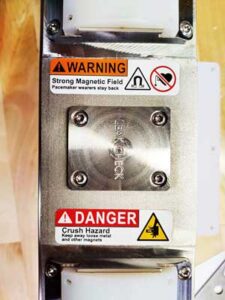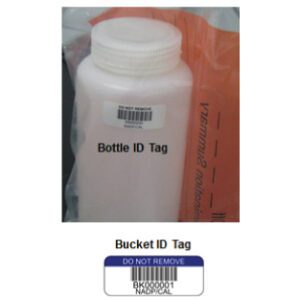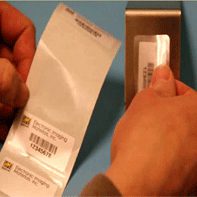We frequently have the opportunity to provide long-term labeling solutions for manufacturers who create lesser-known components of things people use every day. Sputtering Components is certainly one of those organizations; they create cathodes, specifically magnetrons, that are used to apply a thin protective film to various glass products, electronics, solar panels, and more. Whether it’s your phone, television, eyewear, or something else, there’s a good chance something you own was treated with a cathode made by Sputtering Components.
 Manufacturing cathodes requires potentially dangerous processes that need clear and obvious warning labels for the professionals who handle these products. At Sputtering Components, this is especially true for an area where highly magnetized cathodes are indefinitely submerged in flowing deionized water. It was imperative to them that this submerged equipment be labeled with the proper warnings.
Manufacturing cathodes requires potentially dangerous processes that need clear and obvious warning labels for the professionals who handle these products. At Sputtering Components, this is especially true for an area where highly magnetized cathodes are indefinitely submerged in flowing deionized water. It was imperative to them that this submerged equipment be labeled with the proper warnings.
Prior to contacting us, their existing labels were failing to meet their longevity requirements. They needed a label that would not only permanently stick to underwater equipment, but also remain legible to anyone working nearby. Having familiarity with EIM from a previous project, Issac Roberts, a Mechanical Design Engineer at Sputtering Components, reached out to us for help with this one as well. One of our Label Experts, Ed, began by asking him questions to understand the project and recommend relevant material samples to be tested at their location. Over the span of several months, samples were sent and tested, and modifications were made based on Issac’s feedback.
Laminated white plastic labels were the winners. This material allows the labels to remain submerged in water indefinitely, with lamination providing additional protection from abrasion and fading ink. White plastic labels are durable, and their premium cold-temperature adhesive allows them to bond to various surfaces with a wide range of temperatures. The final design selected by Sputtering Components was much different from the original request, demonstrating EIM’s ability to work with customers to find the solution that works best for them. When asked about the testing process, Issac said, “Ed August of EIM was consistent, polite, and informative during this process. Digesting the product needs, explaining the costing process and available tooling so that we could reach a cost-effective solution in a volume that matched our expected annual usage.”
When we asked Issac how the labels are performing now, he told us, “So far, these labels have met the requirements. When comparing our existing solution side-by-side to the current solution the adhesive is night and day better. The printing quality is similar, but the laminate will protect the decal from intermittent degradation due to cleaning solvents or physical abrasion.”
Do you have a tricky labeling challenge? Find your solution with The Label Experts at Electronic Imaging Materials!






